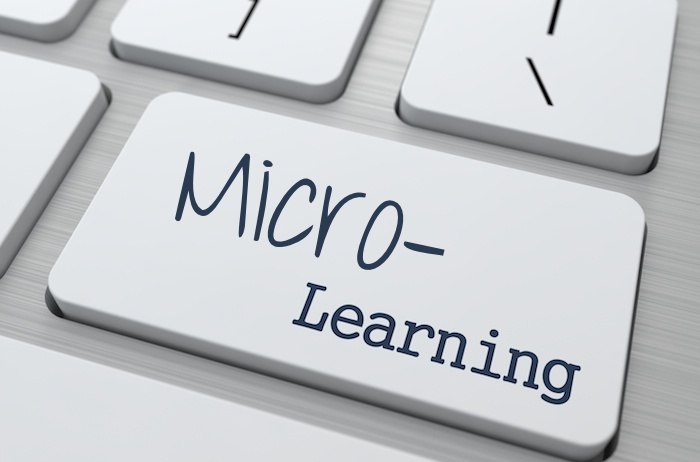School of Engineering, University of South Australia, Adelaide
Sead Spuzic – sead.spuzic@unisa.edu.au
Microlearning and even nanolearning!? Are those just new buzzwords, a fashion of the day, to be covered in a month or a two by the dust they have stirred up today?
According to Wikipedia, Microlearning “deals with relatively small learning units and short-term learning activities…”, and “…refers to micro-perspectives in the context of learning, education and training…”, and “… is used in the domain of e-learning and related fields in the sense of a new paradigmatic perspective on learning processes in media environments”.
There are reputable conferences devoted to this topic [1], the professional providers of “microlearning platforms” [2], and enthusiastic authors [3] all promoting lucrative permutations of microlearning applications. The offers range from the vocational 60-second-Internet-videos teaching the modern professional skills to today’s workforce by means of beautiful and effective training platform, to utilising the combined effects of (fine) arts and Microlearning in education to enhance the curiosity and increase the level of general knowledge in high-school an freshman students, as well as in the adult beginners interested in re-entering education [3].
Some [4] believe that Microlearning provides solution to attracting, developing and retaining talents from millennial generation.
So what’s going on?
In recent years, a number of industrialized countries have become increasingly concerned about the recruitment that will match real time technological demand. As a result, a range of reforms in education are under consideration. Various educational paradigms promote teaching applied rather than academic knowledge. [5]
There is no dispute about the necessity of teaching fundamental disciplines, especially during the early stages of education; striving to categorize knowledge into ‘scientific disciplines’ has certainly brought in the tides of progress. However, compartmentalizing knowledge has also introduced unnecessary barriers. Bridges which link and synthesize disciplines are needed so that applied knowledge can make more effective use of the increasingly vast resource of academic theory. [5, 6]
However, even if these bridges would be erected, the only learners able to walk over them are those who are already blessed with a minimum level of general knowledge.
Nowadays comfortable living standards have dulled our survival impulses. New generations seem to lack the motivation for learning. There is a certain level of tedious disciplining required to fit into the rigid scholarly framework. Academe – a cage of knowledge? [5]
We abhor limits; an inherent curiosity cannot be imprisoned within any single subject area; it lends itself by its nature to an interdisciplinary approach. The habit of questioning should be encouraged in learners; they should be challenged to seek for answers irrespective of the formal boundaries of classified subjects. Such an approach stimulates their curiosity which is amongst the strongest motivational forces we have to our disposal. Of course, untrammeled curiosity need to be moderated, and channelled into creative work; this aspect belongs to the highly skilled area of education. [5]
We are born thirsty for knowledge. Why is this so, and what exactly is this knowledge we seek? Knowledge is a model of some relations that enables the realization of a premeditated change of some relations. A specific piece of knowledge has a context; it relates to when and where it can be reliably applied. We can state that we possess certain knowledge only when it actually has enabled repeated performance. This kind of information ought to be searched for in scientific encyclopaedias, and specialised handbooks. [5]
While knowledge itself is a kind of a frozen relation (true knowledge is unalterable), learning must not be taken to mean a static position. Those who are not continuously learning are either merely vegetating or rapidly deteriorating.
Hence: microlearning provides an option for satisfying our uncompromising need for knowledge by endowing our intrinsic curiosity, via exploiting immense capacity of the information technology.
[1] “Microlearning – Motivation and Gamification in e-Learning”, Microlearning Conference 8.0, April 15-17, 2015, Krems, Austria;
http://www.microlearning.org/microlearning-70-conference-20132 (accessed 13 Jan 2014).
[2] Company Grovo website, www.grovo.com (accessed 13 Jan 2014).
[3] Spuzic S, Stevens C, Pignata S (2014) “The 4th Birth”, novel
http://the-4th-birth.weebly.com (accessed 13 Jan 2014).
[4] Eades J (2014) “Why Microlearning is HUGE and how to be a part of it”. eLearning Industry website, http://elearningindustry.com/why-microlearning-is-huge (accessed 13 Jan 2014).
[5] Spuzic S, Abhary K, Stevens C (2006) “Real Investment in the Production and Education Process: Manufacturing Aided Education”; the 5th Pan-European Conference on Planning For Minerals and Transport Infrastructure: PEMT’06 – Sarajevo 18-20 May 2006.
[6] Abhary K, Adriansen H K, Begovac F, Djukic D, Qin B, Spuzic S, Wood D and Xing K (2009) “Some Basic Aspects of Knowledge” Procedia – Social and Behavioral Sciences, Volume 1, Issue 1, 2009, Pages 1753-1758.

